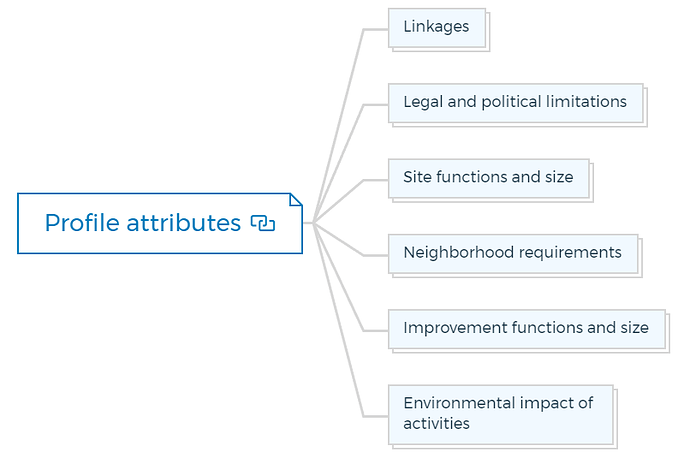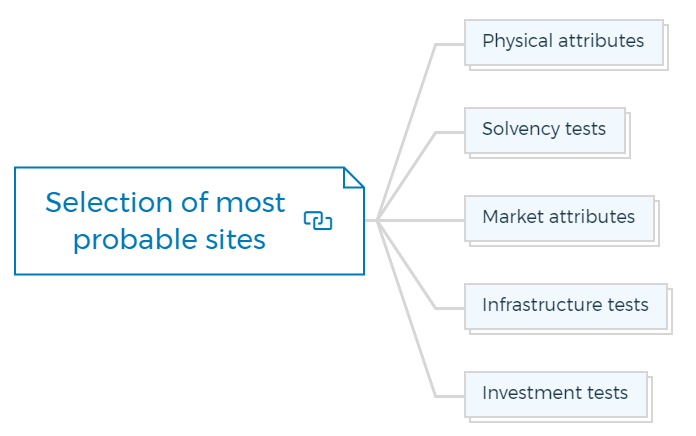Checklist for finding land for development
You should search for the best land available in the property market that suits your ultimate development product. Here are the checks you need to follow -
1. Profile attributes
1.1 Linkages
Assess the proximity of the land to critical markets, suppliers, employees, and ancillary services. Strong linkages can reduce transportation costs and enhance operational efficiency.
1.2 Legal and political limitations
Research zoning regulations, land use restrictions, and any legal limitations that might affect the proposed development. Evaluate political stability and government support for development projects.
1.3 Site functions and size
Define the intended functions of the development and ensure the land size is sufficient to accommodate them. Consider future expansion needs.
1.4 Neighborhood requirements
Analyse the compatibility of the proposed development with the surrounding neighbourhood, ensuring it aligns with local aesthetics and land use patterns.
1.5 Improvement functions and size
Evaluate the potential for improvement and development on the land. Determine if existing structures can be repurposed or if new construction is necessary.
1.6. Environmental impact of activities
Conduct an environmental impact assessment to identify potential environmental risks and ensure compliance with regulations.
You are missing out if you haven’t yet subscribed to our YouTube channel.
2. Preliminary screening of alternatives with use profile criteria
2.1. Qualitative criteria
Consider factors such as aesthetics, community acceptance, and long-term sustainability.
2.2. Quantitative criteria (Nonfinancial)
Evaluate land accessibility, visibility, noise levels, and other measurable factors influencing the development’s success.
2.3. Subjective preferences
Incorporate stakeholders’ preferences and opinions regarding the site’s location, surroundings, and suitability for the intended purpose.
3. Financial impact forecasts:
Estimate the financial implications of the development, including construction costs, operational expenses, revenue projections, and potential return on investment.
Learn More
4. User trade-off values
Evaluate the trade-offs between different attributes and priorities:
4.1. Capital efficiency vs employee security
Determine the balance between minimising costs and ensuring a safe and secure work environment.
4.2. Marketing edge vs Raw material sources
Weigh the benefits of a strategic location for marketing purposes against proximity to essential raw material sources.
4.3. Community obligations vs company efficiency
Consider social responsibility and community impact while maintaining operational efficiency.
4.4. Location capital vs future advertising expense
Analyse the upfront investment in the location versus potential future advertising and promotional expenses.
4.5. Current business practice vs long-term changes in technique
Assess the alignment of the proposed development with current business practices and its adaptability to future changes in industry techniques.
5. Selection of most probable sites
5.1. Physical attributes
Evaluate the land’s physical characteristics, including topography, soil quality, drainage, and potential for natural hazards. Consider legal aspects, such as land ownership and existing easements.
5.2. Solvency tests
Determine the project’s financial feasibility by assessing private capital justification, required investment, potential public subsidies, and net private capital exposure.
5.3. Market attributes
Analyse general market trends, specific micro markets, consumer expectations, and the projected growth potential of the area.
5.4. Infrastructure tests
Evaluate the impact of the development on local infrastructure, public service capacity, environmental impact, and alignment with public priorities and subsidies.
5.5. Investment tests
Consider investor limitations, objectives, and acceptable risk levels when evaluating the feasibility of the development.
6. Most probable use of site
Identify and finalise the most suitable and profitable use of the land based on the analysis of all attributes and trade-offs.
Learn More






